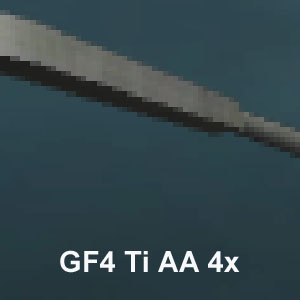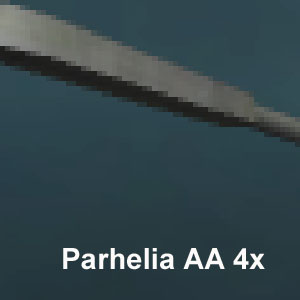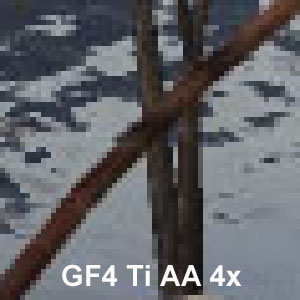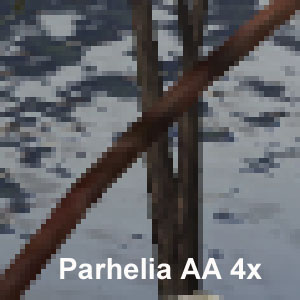3dcgi said:
Why do you think there is pixel popping as oposed to the edge never being antialiased? I agree it would have been nice if an animation of the triangles would have been provided, because motion is the best way to evaluate antialiasing.
Maybe I expressed my concerns wrongly (I'm not sure if there is a technical definition for "pixel popping"?

), IMHO when playing without any AA, the jaggies are pretty distracting at anything below 1280x960. When in motion, some nonAAed edges can create some distracting looking aliasing which I meant when refering to pixel popping (in the sense that they just pop into your attention although you're looking at another part of the screen), this depends on game, resolution, models, geometry, texture quality and contrast etc. but a great many games have plenty situations that cry for AA louder than others. If Parhelia would happen to ignore some of those edges (e.g. they're not polygon edges but intersections) during gameplay, then to me personally it'd probably be worse than having an an overall less efficient AA method (that takes care of all edges).
It's really hard to say that without seeing it for real though, I'm trying to be very carefull about this and am well aware that the 3dcenter.de test was synthetic and probably exaggerated the possible differences a lot. Overall I got the impression that FAA works pretty well most of the time and looks marvelous, so until I got to check on my concerns I wont make a judgement on the whole thing, especially since its also a matter of personal preference.

Jerry Cornelius said:
Those AA comparisons using FAA don't look like they were done right.
I think they were done just right, not much you can do wrong there. I don't doubt the tester's ability to take the proper screenshots and set up a webpage, nor do I think the test was manipulated to any method's advantage on purpose. Thing is, had they used a different triangle setup for the tool (4 instead of 2 intersecting ones), Parhelia would've probably AAed the intersection, but the purpose of the test was exactly to find out wether such a weakness exists and where it appears, so that's fine. This way we finally know one of the weknesses of FAA (pretty sure anyway) - polygon edges get AAed, but intersections of polygons Parhelia has its problems with. Such edges occur in most games but usually not on any majority of the screen. It occurs mostly on character models I guess, not static level geometry, but that too depends on the game/engine (would go too far IMHO to go into those aspects now)...




